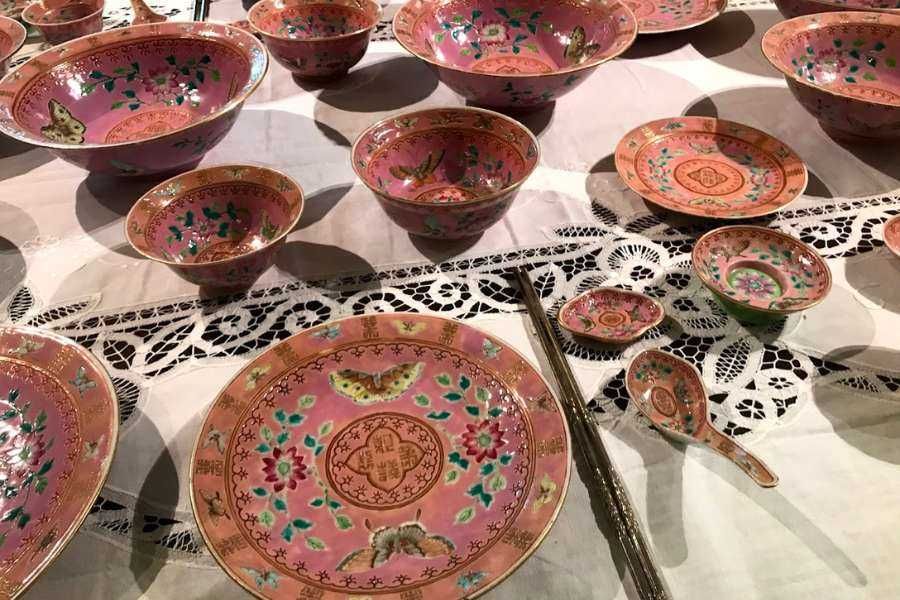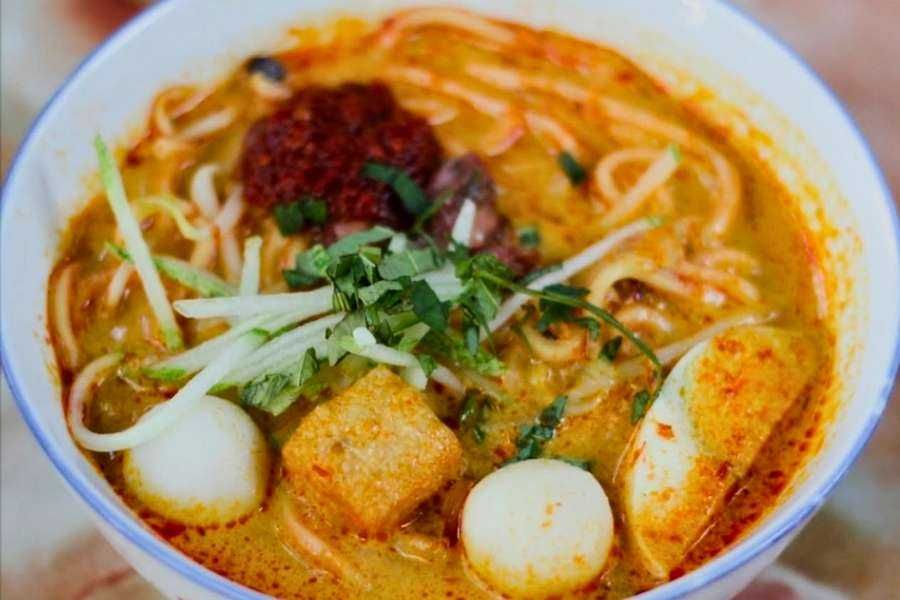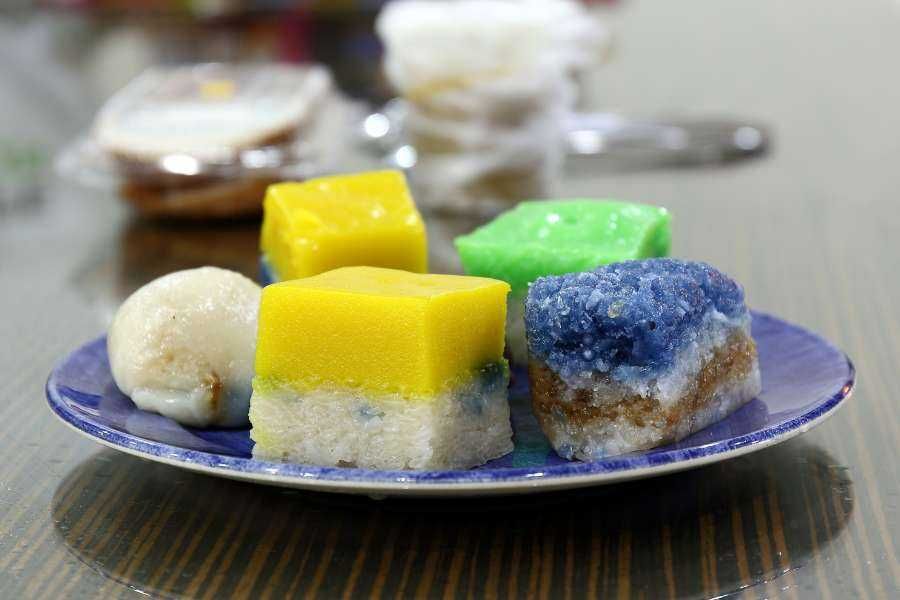Peranakan Cuisine
Peranakan cuisine is a hidden gem in the world of culinary delights. It remains undiscovered by many travelers exploring the culinary tapestry of Asia. This obscurity is what makes Peranakan food one of the most intriguing fusion cuisines in Southeast Asia. The history and ingredients behind this cuisine are a testament to the multiculturalism of the region. It offers a culinary experience that's as rich in cultural significance as it is in flavor.
Peranakan cuisine, also known as Nyonya or Straits Chinese cuisine, is a fusion of Chinese, Malay, and Indonesian flavors. Peranakan food is a testament to the multiculturalism of the region, with its roots dating back to the intermarriage between Chinese immigrants and local Malays and Indonesians in the 15th century.
This intermingling of cultures gave birth to a distinct culinary tradition that combines the aromatic spices of Southeast Asia with the cooking techniques of China. The word "Peranakan" itself means "locally born," emphasizing the fusion of these diverse influences.
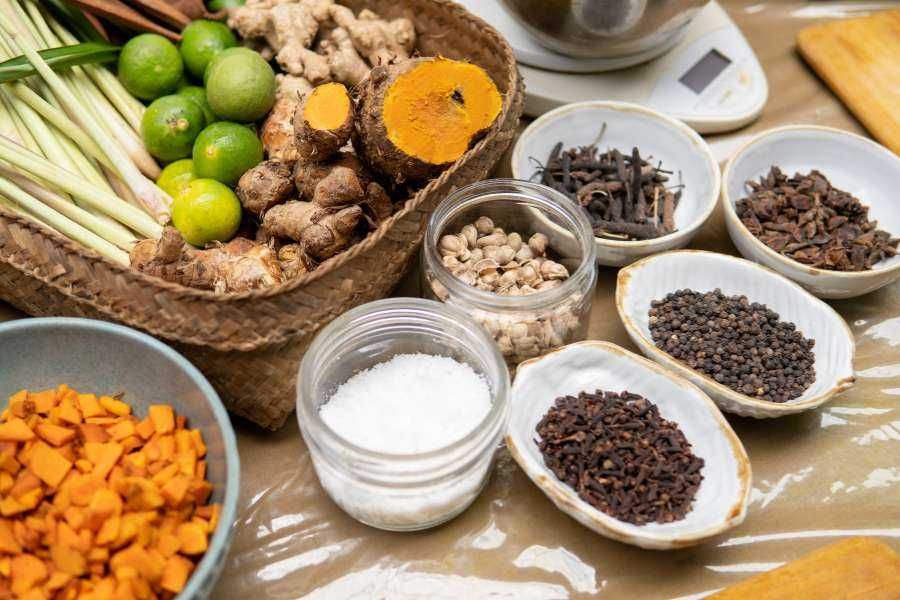
Peranakan cuisine is celebrated for its rich and intricate flavors, from an array of ingredients. Among the key components, belacan, a pungent shrimp paste, forms the foundation of numerous Peranakan dishes. Lemongrass lends a citrusy and aromatic note to the curries and soups. Galangal, a close relative of ginger, introduces a unique and peppery flavor that distinguishes Peranakan creations.
Candlenuts, with their mild and creamy texture, often serve to thicken rich sauces and curries. While turmeric infuses the dishes with its characteristic golden hue and subtle earthy undertones. Most importantly, kaffir lime leaves bring a refreshing and citrusy aroma, rounding out the unique and harmonious taste of Peranakan cuisine.
Peranakan dining etiquette is a blend of Chinese and Malay customs, resulting in a unique dining experience. Much like many Asian meals, Peranakan dining is characterized by family-style sharing. Dishes are arranged in the center of the table, encouraging communal enjoyment. This practice reflects the values of togetherness and sharing, which are highly cherished in Peranakan culture.
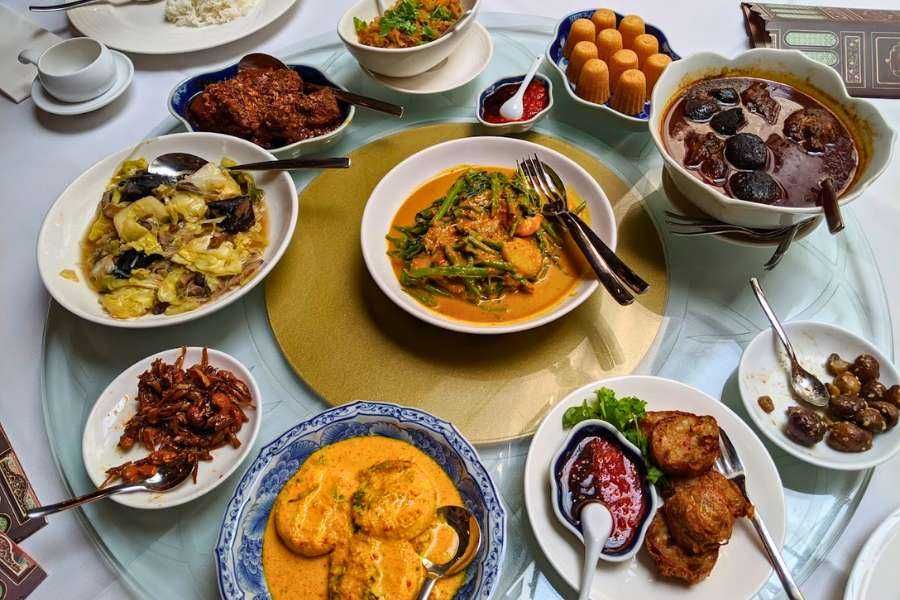
Planning a trip to Asia?
Allow us to tailor a bespoke journey that caters to your unique preferences.
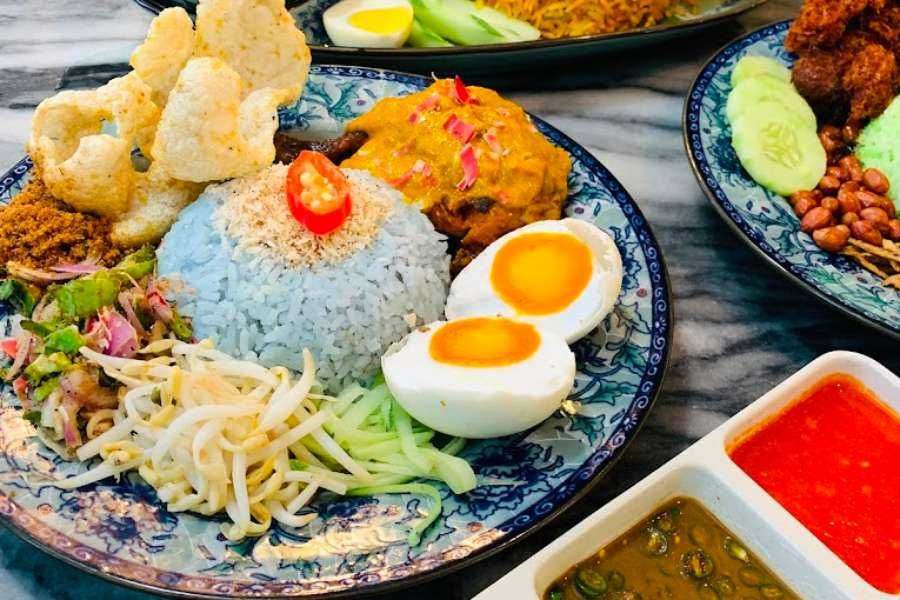
In Peranakan tradition, demonstrating respect to elders is of paramount importance. One way to honor this custom during a meal is by waiting for the eldest person at the table to initiate the meal. This simple act of courtesy exemplifies the deep respect for senior family members and reflects the strong family bonds that Peranakan culture upholds.
While chopsticks are commonly used for a variety of dishes, forks and spoons are also present at the table, especially for certain Peranakan dishes that may be more convenient to enjoy with Western utensils.
No exploration of Peranakan cuisine is complete without trying these mouthwatering dishes that reflect the essence of this culinary tradition. At the forefront of Peranakan must-tries is the Nyonya Laksa, a fragrant and spicy coconut milk soup.
This savory delight features a harmonious blend of flavors, with noodles and succulent prawns immersed in the creamy, aromatic broth. It's an explosion of taste, with the richness of coconut milk beautifully balancing the fiery spiciness that characterizes this iconic dish.
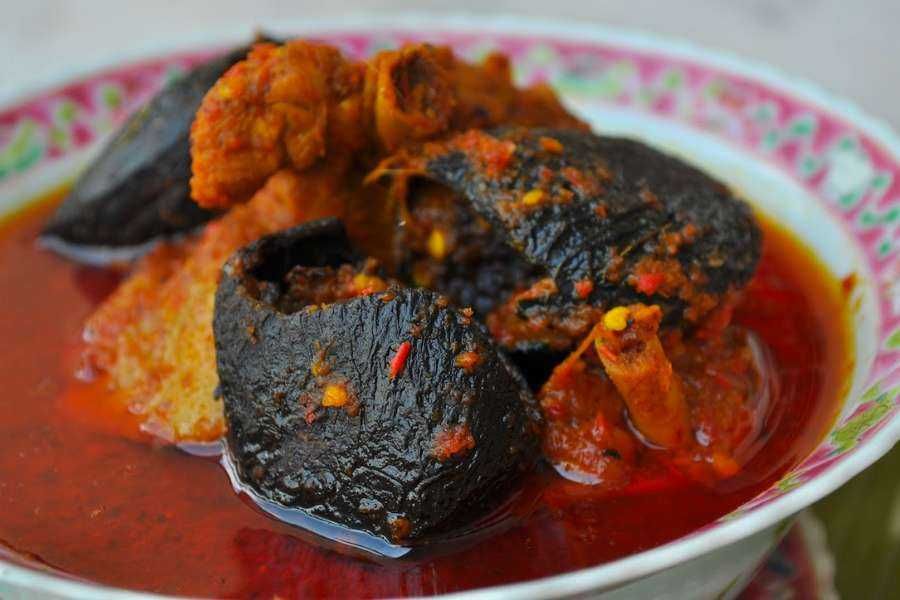
Read: What to eat in Penang?
An iconic Peranakan dish, Ayam Buah Keluak, chicken stewed in a rich, nutty gravy made from the elusive buah keluak nuts. This dish imparts a unique, slightly bitter flavor, offering a remarkable contrast to the other more aromatic and spicy dishes in Peranakan cuisine. With its distinct taste, is an acquired flavor experience you won't want to miss!
For those who prefer pork, Babi Pongteh is a delightful choice. This dish features tender braised pork and shiitake mushrooms bathed in a soybean paste sauce. It's a savory and aromatic delight, often served with rice, creating a satisfying and well-balanced meal that's sure to please your palate.
A true treat for your taste buds, Otak-Otak is a flavorful fish mousse grilled in banana leaves. The mousse is spiced, providing a delightful mix of flavors that enhance the overall taste.
To round off your Peranakan culinary adventure, don't forget to explore the world of Kueh desserts. In Peranakan dessert offerings, you'll discover various kinds of Kueh waiting to be savored. From the intricate layers of Kueh Lapis to the sweet and chewy Onde-Onde, these desserts offer a sweet ending to your exploration of this unique cuisine.
We encourage you to try Peranakan food for yourself. Whether you’re in Singapore, Malaysia, or Indonesia, you’ll find restaurants serving authentic Peranakan dishes. So, as you plan your next adventure, consider adding a visit to one of these regions to your itinerary. Let the flavors of Peranakan cuisine bring you to a world of unique and unforgettable tastes.

